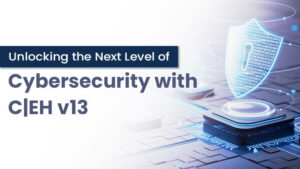
Cloud Computing Services
Introduction In the fast-paced digital world, cloud computing services have become the backbone of modern IT infrastructure. The ability to access computing power, storage, and
Supercharge Your Cloud Computing, Cybersecurity, Networking, Microsoft and AI Skills with Our Premium Plan! BE A MEMBER NOW!

Introduction In the fast-paced digital world, cloud computing services have become the backbone of modern IT infrastructure. The ability to access computing power, storage, and

Introduction In today’s rapidly evolving digital landscape, cybersecurity professionals face increasingly complex and sophisticated threats. As cyberattacks become more advanced, the need for highly skilled

Introduction Artificial Intelligence (AI) is revolutionizing the way we interact with technology to the extent that machines can do things that have been done traditionally
Table of Contents
The cause of most data breaches can be mapped to limited attack surface visibility. Inverting this statement reveals a tactic for reducing your data breach risks increase attack surface visibility. Cyber Threat Exposure Management presents an advanced security risk management approach by prioritizing attack surface visibility. This article covers detailed knowledge of Adopting a Cyber Threat Exposure Management Approach in 2023.
The process of ensuring security programs can recognize, prioritize, and handle unforeseen security risks and exposures is known as threat exposure management.
Security teams need help scaling their risk management initiatives to keep up with the rate at which their attack surfaces are growing. As a result, the possibility for increasing security posture is limited, and the risk of a data breach rises since security controls must change to meet the evolving threat landscape.
Threat Exposure Management addresses this issue by giving visibility as a top priority. All facets of a cybersecurity program engaged in the threat identification process must be expanded to boost visibility.
TEM addresses this issue by emphasizing visibility. All parts of a cybersecurity program involved in the threat discovery process must be expanded to improve visibility. As a result, an attack path and attack vector management program with numerous components is created.
Exposure management is a long-term strategy that considerably lowers a company’s exposure to cyber risks over time.
Exposure management is a continuous, ongoing process that can assist a company in understanding its attack surface, tracking its cybersecurity performance in light of the evolving cyber threat scenario, and gradually reducing its attack surface.
An exposure management program should thoroughly evaluate an organization’s internal and external attack surface, accurately identify cyber exposure and vulnerabilities, and provide an exposure management program that prioritizes remedial processes.
To keep up with the rate at which their attack surfaces are expanding, security teams need help scaling their risk management activities. As security controls are not changing to keep up with the changing threat landscape, the possibility of enhancing security posture is limited, and the risk of data breaches is elevated.
Threat Exposure Management deals with this problem by prioritizing visibility. Every aspect of a cybersecurity program involved in the threat identification process needs to be increased to increase visibility.
By transforming risk assessment models from a crude point-in-time approach to real-time risk awareness, the CTEM concept has a considerable positive impact on vendor risk management programs. The vendor attack surface visibility point-in-time approach, where risk assessment is the only determinant of vendor attack surface visibility, only depicts third-party security threats at a particular time between scheduled assessments. Security teams are virtually operating in the dark regarding new threats like vendor software misconfigurations, CVEs, and exposures that make phishing and malware attacks more likely between assessments.
Risk assessments are combined with ongoing attack surface monitoring or the addition of a real-time component to third-party attack surface management so that security teams are constantly aware of each vendor’s security posture and, consequently, the degree of susceptibility to data breaches.
The “continuous” aspect of CTEM is achieved through a symbiotic interaction between the CTEM program and related risk mitigation programs, in which CTEM data is regularly iterated to improve its decision-making abilities.
CTEM transforms internal and external attack surface management by pushing security teams to adopt a proactive risk management mentality. With a reactive attitude guiding threat identification activities, breach mitigation programs will be optimized to detect active and static threats. Faster active cyberattack detection shortens the data breach lifetime, potentially saving millions of dollars in damages.
The CTEM program has five steps that are designed to proactively improve and enforce the organization’s security policy with a focus on vulnerability management. Decision-makers and cross-functional stakeholders can break through organizational silos by focusing on threat exposures and prioritizing mitigation by adopting the continuous, integrated, step-by-step CTEM cycle described below:
The effective deployment of a CTEM program laid the groundwork for highly efficient risk mitigation methods and tactics. You can use this framework to guide your cybersecurity program toward a Cyber Threat Exposure Management strategy.
Your current threat identification and risk management programs must first be optimized because the demand for data feeds between systems will dramatically grow after the installation of a CTEM program. Otherwise, the goal of having a CTEM program would be defeated because your security personnel will spend most of their time resolving integrations rather than controlling your threat surface.
A CTEM program’s heightened threat visibility is only helpful if you can quickly address each discovered threat. During the stress of a real-time cyberattack, incident response plans assist security professionals in systematically and calmly working through the required threat response methods.
In addition to having a thorough IRP in place, be sure to put into practice a policy to keep it updated in pace with new threats. Your IRP resources will need to be able to handle this demand since your CTEM program will continuously feed them with fresh threat information.
The ability to map internal and exterior attack surfaces should be a feature of any attack surface management solution. Your attempts to increase visibility will precisely align with what a CTEM expects if you have this capability.
Your security personnel are informed of the state of their attack surface through enhanced visibility. However, this data is only valuable if security teams can spread risk mitigation actions effectively.
Beyond the digital environment, real-time danger visibility is available. Your staff is essential to identify potential risks before they breach your network. To address the significance of threat visibility and vigilance in a regular business setting, update your cyber awareness training program.
A CTEM program offers valuable data that will confirm the success of your risk mitigation measures and support the costs associated with the program. This data stream must be incorporated into a cybersecurity reporting program to be effectively communicated to stakeholders and the Board.
To decrease administrative reporting pressures on your team, cybersecurity reports should be able to be created instantaneously within a Vendor Risk Management system, in keeping with the workflow efficiency foundations that should support a CTEM program.
Implementing a cyber threat exposure management strategy may drastically lower your risk of a data breach in 2023. This proactive cybersecurity risk management strategy prioritizes real-time security threat detection, remediation, and mitigation.
You can successfully establish a CTEM program and strengthen your organization’s cybersecurity posture by following the above mentioned procedures. You can remain ahead of the dangers and guarantee the continued security of your organization by using a CTEM method.
© 2025 All rights reserved | Privacy Policy | Terms and Conditions | Sitemap | Cookie Policy




